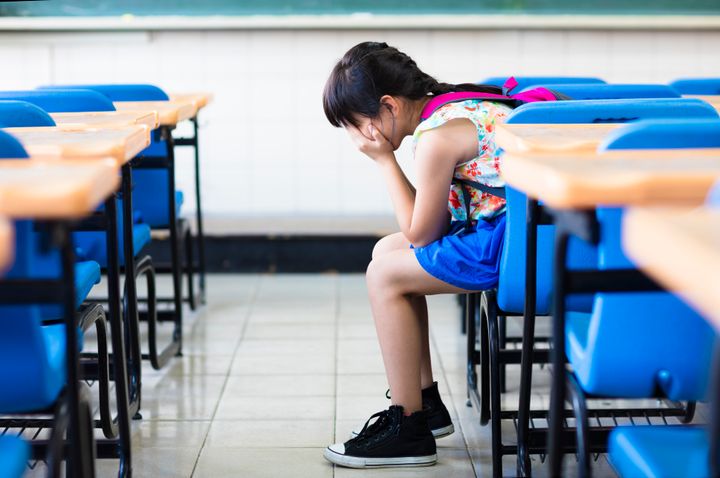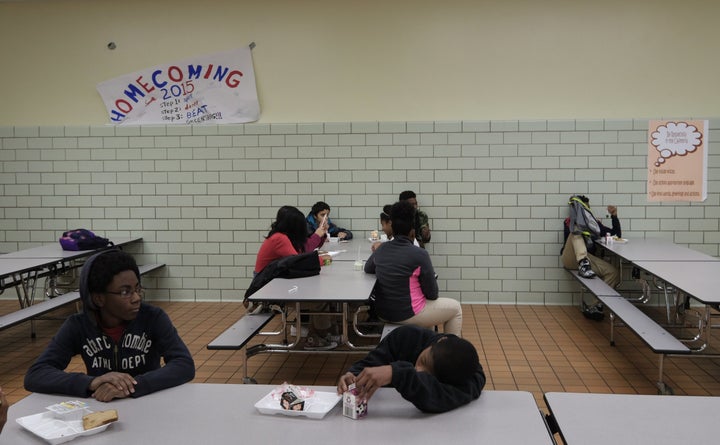The number of homeless public school students has hit a record high in recent years, and their unstable living conditions are putting their lives at risk, a new report concludes.
The report, “More Than a Place to Sleep,” examined the effects of homelessness on teenagers ― and found that homeless high schoolers are more likely than their housed peers to attempt suicide, experience intimate partner violence and suffer from preventable but serious health issues.
The nonprofit Institute for Children Poverty & Homelessness released the research, which relied on a small data sample of high schoolers in New York City collected by the Centers for Disease Control in its 2015 Youth Risky Behavior survey.

While homelessness among teenagers is nothing new, few studies have attempted to understand the nuances of how being homeless affects them. 2015 was the first year the CDC included survey questions that distinguished homeless students from housed students.
Of the 5,762 New York City students surveyed who answered questions about housing, 712 reported experiencing a degree of homelessness. That could mean living in a shelter, crashing somewhere temporarily or residing in someone else’s home.
The risks they face are “cause for alarm,” the authors of the report noted.
Homeless teens are three times more likely to attempt suicide than housed teens, at 20 percent versus 6 percent, the report found.
They’re also three times more likely to have been hurt by someone they were dating.
“Someone on my block might say ‘Hey, you all right? You can come stay with me,’ and they’re a drug dealer, and it’s not like necessarily we’re doing anything bad, but it’s just the environment I’m around.”
- Former homeless student
“The streets, it’s always there for you,” said a homeless student who graduated in 2013. “Someone on my block might say ‘Hey, you all right? You can come stay with me,’ and they’re a drug dealer, and it’s not like necessarily we’re doing anything bad, but it’s just the environment I’m around. So what happens after that? You know what I mean? It’s not good.”
Homeless high school students also aren’t getting adequate nutrition and sleep – which are the basic building blocks for their development.
Over a period of a week, 33 percent of students said they went without breakfast. Homeless teens are more than twice as likely as housed students to go to school hungry.

“I remember going to M&M World, stealing the candy and putting it in my pocket, being chased by the security guard,” said one of the teenagers surveyed, who was formerly homeless. “But I was doing it because I was hungry … Imagine going the whole day not eating.”
Students who eat breakfast are more likely to have better attendance and participate in class, according to a 2015 survey of teachers conducted by the nonprofit No Kid Hungry.
But even when breakfast is available at school, underserved kids are often reluctant to partake. For one, they might be too ashamed to admit that they don’t have enough food at home. Logistical issues also often come into play. If breakfast is served before school officially starts, their parents may not be able to get their kids to school then, according to the No Kid Hungry report.
“Imagine going the whole day not eating.”
- Homeless student
Homeless students are also more likely to get fewer than four hours of sleep. That puts them at risk for obesity, diabetes, developing mental health issues and substance abuse problems, among other things.
Leveraging existing problems could better protect and support homeless students, the authors of the report say. The Institute for Children Poverty & Homelessness recommended expanding school-based health programs to target homeless students and to expand services for them at shelters. It also emphasized the need to collect more accurate data. The current CDC survey focused only on homeless students in high school, not homeless students who are younger.
“The long-term health and well-being of students experiencing homelessness are in danger, yet until now the unique needs and risks these students face have gone unrecognized,” the authors of the report noted. “The disparity in health outcomes for homeless students, like the disparity in educational success, appear to surpass the impacts of poverty or race; ameliorating these disproportionate burdens is imperative to breaking the cycle of homelessness.”
